Contemporary interior design is all about creating a sophisticated, sleek, and comfortable living space that reflects modern sensibilities. This design style has evolved over the years and has come to define a certain aesthetic that’s both minimalist and functional. In this article, we’ll explore the characteristics, key elements, and tips for incorporating contemporary interior design into your home. So, let’s dive in!
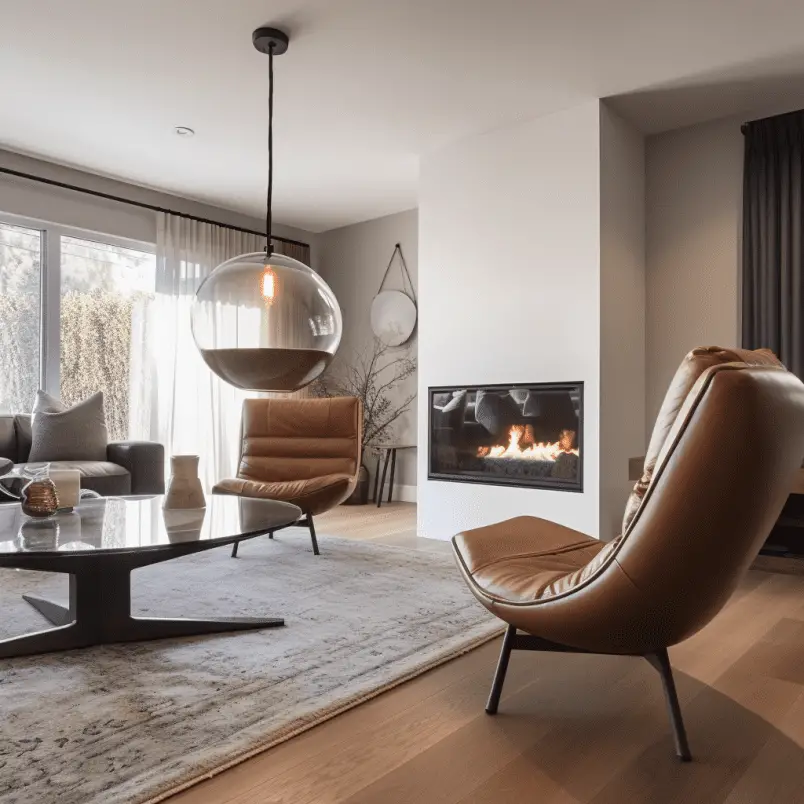
Table of Contents
The Evolution of Contemporary Interior Design
Contemporary design, as the name suggests, is rooted in the present. It’s a constantly evolving style that adapts to changes in culture, technology, and trends. Contemporary interior design has its origins in the mid-20th century, with influences from the Modernist, Art Deco, and Bauhaus movements. Over the years, this style has embraced the use of new materials, innovative designs, and a focus on comfort and functionality.
Characteristics of Contemporary Interior Design
Some of the most notable characteristics of contemporary interior design include:
- A focus on clean lines and minimalism
- A neutral color palette
- Open spaces with a seamless flow
- An emphasis on natural light and materials
- Functionality and comfort
- Bold accents and artwork
Key Elements of Contemporary Interior Design
Clean Lines and Minimalism
Contemporary design is characterized by clean lines, geometric shapes, and minimal ornamentation. This design approach creates a sense of simplicity and order, allowing the space to feel calm and uncluttered. Furniture, lighting, and accessories should have simple, streamlined forms that blend seamlessly into the overall design.

Neutral Color Palette
A neutral color palette is a signature feature of contemporary interior design. Colors like white, beige, gray, and black are commonly used to create a backdrop that allows the other elements in the space to shine. By keeping the color scheme simple, you create a sense of unity and harmony within the room.

Open Spaces
Contemporary design values open spaces and a seamless flow between rooms. This approach encourages the use of open floor plans and minimal partitions, allowing natural light to flood the space and create an airy, spacious feel. Consider removing unnecessary walls or using glass partitions to enhance the open concept.

Natural Light and Materials
In contemporary design, natural light plays a key role in creating a warm and inviting atmosphere. Large windows, skylights, and glass doors are often used to maximize natural light and bring the outdoors in. Natural materials, such as wood, stone, and metal, are also commonly used to add warmth and texture to the space.

Functionality and Comfort
Contemporary interior design prioritizes functionality and comfort. Furniture should be comfortable, practical, and versatile, serving multiple purposes and fitting the needs of the homeowner. Storage solutions should be sleek and hidden, allowing the space to maintain its minimalist aesthetic while still providing ample storage.
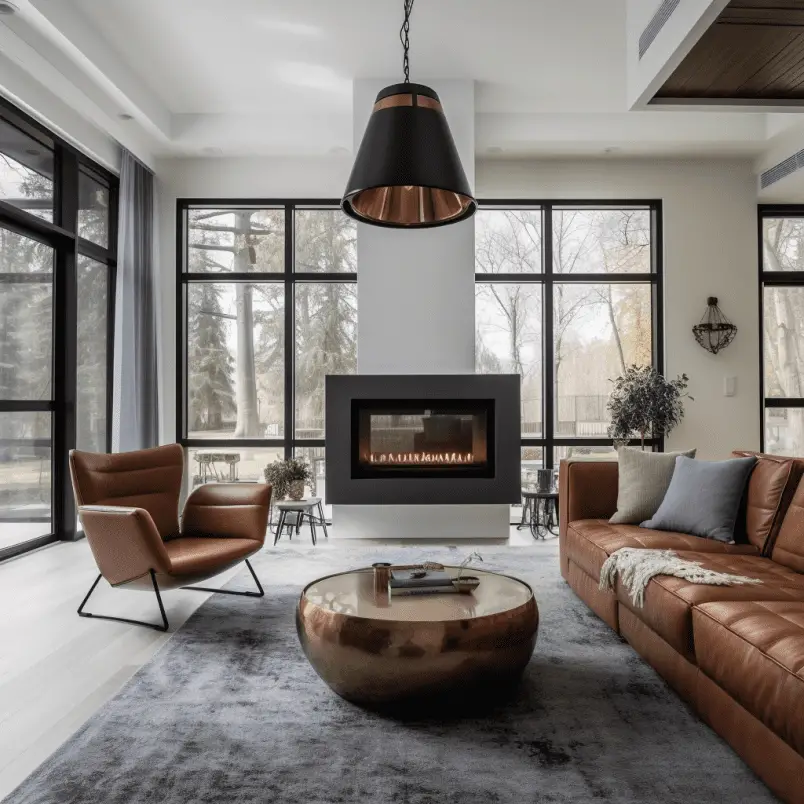
Bold Accents and Artwork
While contemporary design is rooted in minimalism, it doesn’t shy away from bold accents and statement pieces. A well-curated selection of artwork, sculptures, or decorative items can add personality and depth to the space. Consider using bold colors, patterns, or textures to create visual interest and contrast against the neutral backdrop.

Tips for Incorporating Contemporary Interior Design
Declutter Your Space
To achieve a contemporary look, start by decluttering your space. Remove unnecessary items, and only keep things that serve a purpose or have sentimental value. A clean, organized space is the foundation of contemporary design.
Choose the Right Furniture
Select furniture with clean lines, geometric shapes, and minimal detailing. Opt for pieces that are both stylish and functional, and consider investing in multipurpose items that can save space and create a more streamlined look.
Select the Perfect Color Scheme
Stick to a neutral color palette for the walls, floors, and large furniture pieces. This will create a cohesive and harmonious look, allowing your bold accents and artwork to take center stage. Don’t be afraid to play with textures and patterns to add visual interest to the space.
Add Statement Art Pieces and Accessories
Incorporate bold artwork, sculptures, and accessories that reflect your personality and make a statement. These pieces will serve as focal points, adding depth and character to the room. Remember to keep it balanced – too many statement pieces can make the space feel cluttered and overwhelming.
Incorporate Natural Elements
Bring in natural materials like wood, stone, and metal to add warmth and texture to your contemporary space. Consider using these materials for flooring, countertops, or accent walls. Additionally, add plants and greenery to breathe life into the space and create a connection with nature.
Contemporary Interior Design in Different Rooms
Contemporary interior design is characterized by clean lines, neutral colors, and minimalistic elements. This style is focused on simplicity, functionality, and sophistication. Here’s how to incorporate contemporary design into various rooms in your home.
Living Room
A contemporary living room should be open, airy, and clutter-free. Choose furniture with clean lines and neutral colors, such as a streamlined sofa, a sleek coffee table, and minimalist shelving. Keep the walls free of excessive decor, opting for a few statement pieces of artwork or a large mirror. Add warmth and texture with a simple area rug and a few strategically placed throw pillows or blankets.
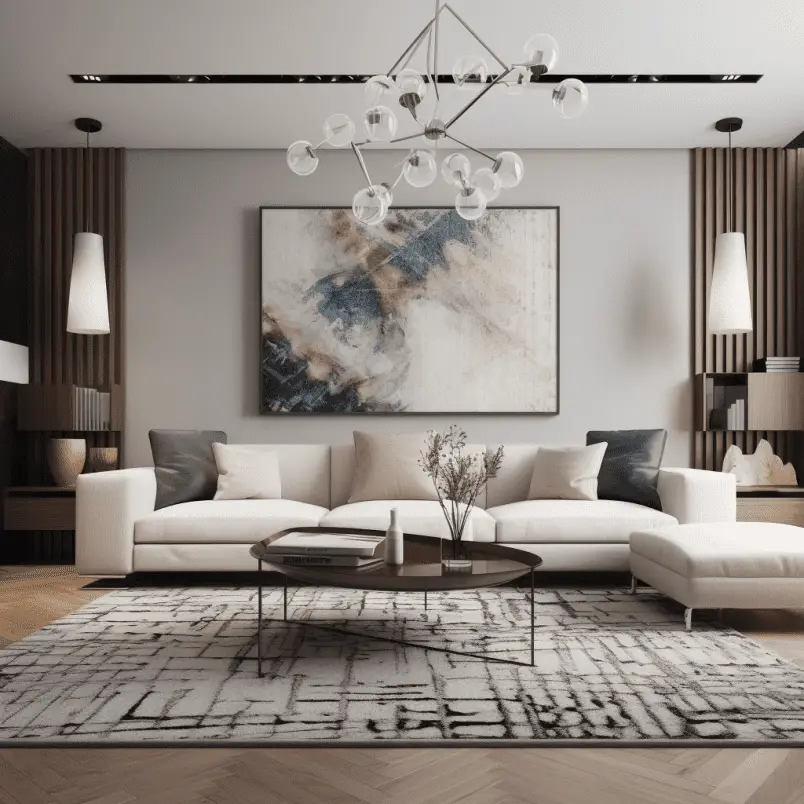
Kitchen
A contemporary kitchen should be both functional and visually appealing. Opt for streamlined cabinetry, often with flat-panel doors and minimal hardware. Choose modern appliances and fixtures with a sleek, stainless steel finish. Keep countertops clutter-free and use a neutral color palette, such as white, gray, or beige, with pops of color introduced through accessories, like a bold backsplash or colorful bar stools.
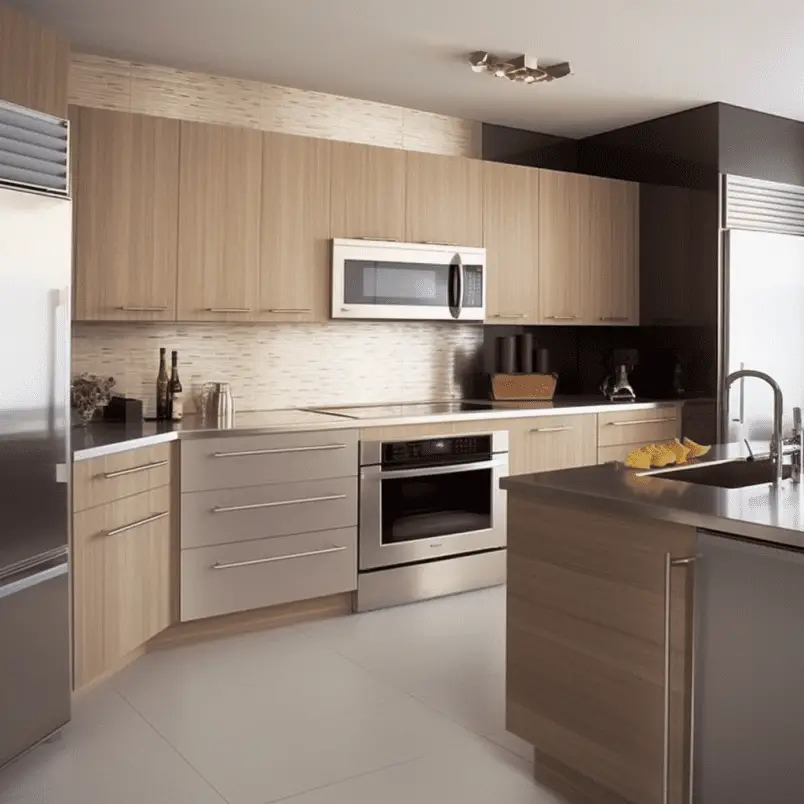
Dining Room
In a contemporary dining room, focus on simplicity and elegance. Choose a modern dining table with clean lines, often made from materials like glass, metal, or wood. Pair the table with simple, yet comfortable, chairs in a coordinating style. Limit the use of centerpieces and accessories, opting for a single statement piece, such as a large vase or sculptural artwork. Use recessed or pendant lighting to create a subtle, ambient atmosphere.
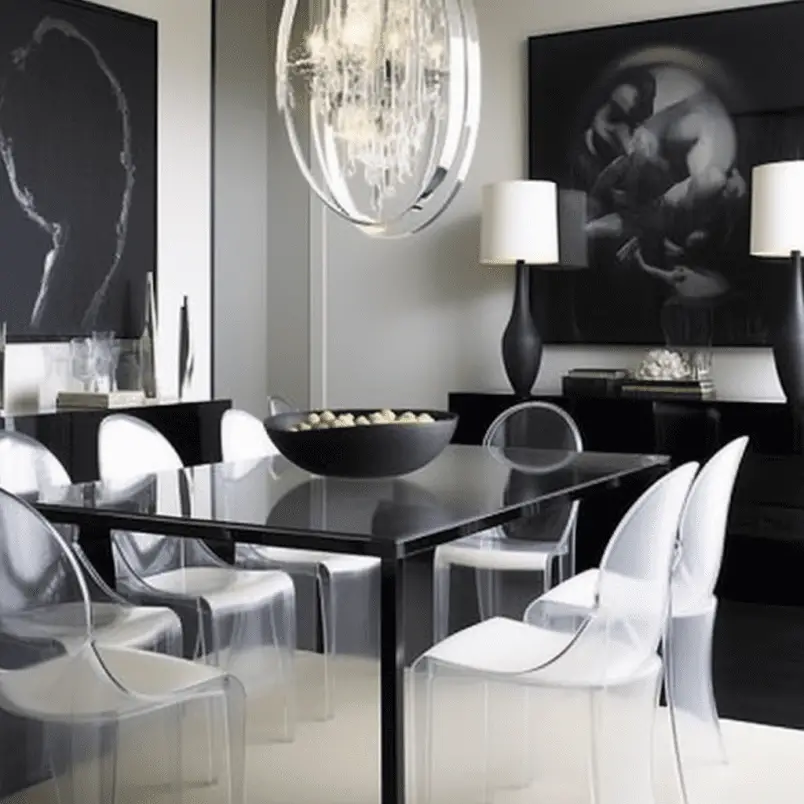
Bedroom
A contemporary bedroom should be a calming and restful sanctuary. Select a simple bed frame, often with a low-profile design, and choose bedding in neutral colors and minimal patterns. Opt for sleek, functional storage solutions, such as built-in wardrobes or floating shelves. Keep the walls free of clutter, incorporating one or two pieces of artwork or a statement headboard. Use soft, ambient lighting to create a serene atmosphere.
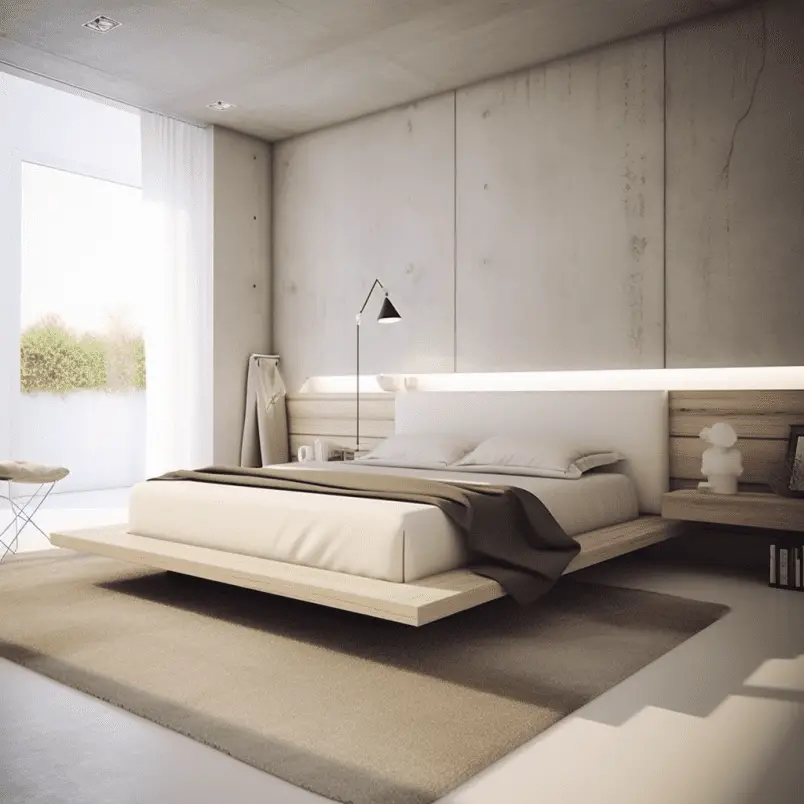
Bathroom
In a contemporary bathroom, focus on clean lines and modern fixtures. Choose a frameless glass shower enclosure, a freestanding bathtub, and streamlined sinks and vanities. Opt for neutral-colored tiles or concrete for the floors and walls, adding visual interest with subtle patterns or textures. Incorporate modern lighting solutions, such as recessed or LED lights, to create a bright and inviting space.
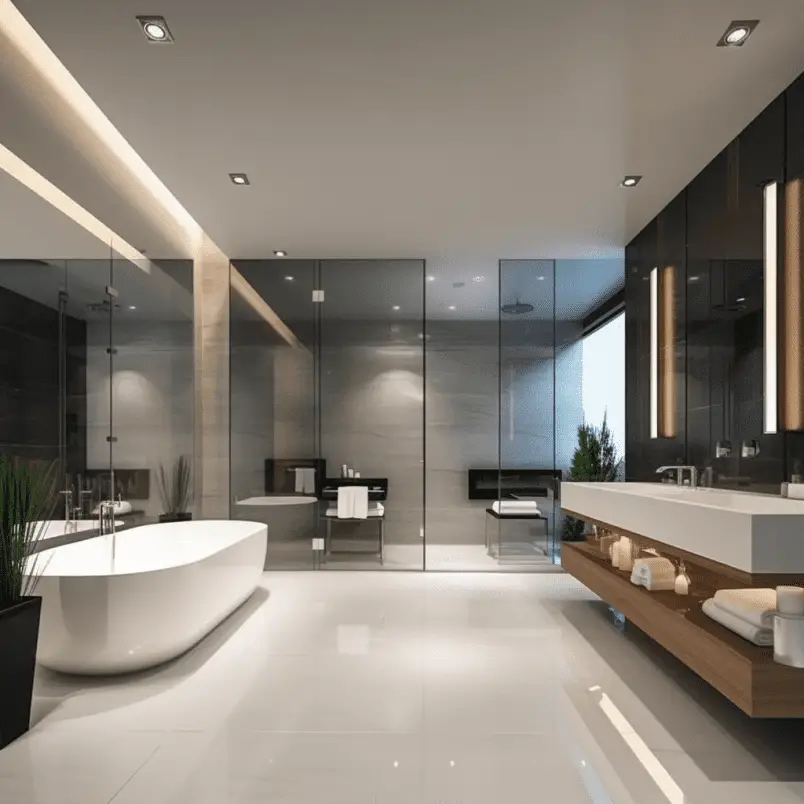
Pros and Cons of Contemporary Interior Design Style
Contemporary interior design emphasizes clean lines, simplicity, and functionality. While this style offers numerous benefits, it also has some drawbacks. Here are the pros and cons of contemporary interior design.
Pros:
- Timeless appeal: Contemporary design is often seen as timeless, thanks to its simplicity and focus on functionality. This means your space is less likely to feel outdated as trends change.
- Clutter-free environment: With its emphasis on minimalism, contemporary design encourages a clutter-free living space, which can be both visually appealing and beneficial to mental well-being.
- Versatility: Contemporary design can easily be adapted to suit personal tastes and preferences. It also works well with other design styles, allowing you to create a unique and personalized space.
- Low-maintenance: The clean lines and minimalistic approach of contemporary design make it easy to maintain, as there are fewer intricate details to clean or maintain.
Cons:
- Perceived as cold or sterile: The minimalistic nature and neutral color palette of contemporary design can sometimes create a cold or sterile atmosphere. However, this can be counterbalanced by incorporating warm textures, colors, and natural elements into the space.
- Lack of personal touch: Due to its focus on simplicity, contemporary design can sometimes feel impersonal. To address this, consider adding personal touches through artwork, family photos, or unique decor pieces that reflect your personality and interests.
- Limited ornamentation: Contemporary design may not appeal to those who enjoy intricate details, elaborate patterns, or ornate decorations. If you prefer a more decorative style, you might find contemporary design too plain or austere.
- Higher costs for certain elements: While the overall style is often minimalistic, contemporary design can involve the use of high-quality materials and fixtures, which may come with a higher price tag. Additionally, custom-designed furniture or built-in storage solutions can be more expensive than off-the-shelf options.
- Not suitable for every space: Contemporary design works best in spaces with open floor plans and an abundance of natural light. If your home has smaller, more enclosed spaces or limited natural light, achieving the desired contemporary look may be challenging.
Conclusion
Contemporary interior design is an ever-evolving style that reflects modern living. By focusing on clean lines, minimalism, a neutral color palette, open spaces, natural light and materials, functionality, and bold accents, you can create a sophisticated and comfortable space that feels current and fresh. Keep these tips in mind as you transform your home into a contemporary haven.
What is the difference between contemporary and modern interior design?
Contemporary design is an ever-evolving style that reflects current trends, while modern design refers to a specific design movement from the early to mid-20th century. Contemporary design may borrow elements from modern design but is more fluid and adaptable.
Can I mix contemporary design with other styles?
Absolutely! Mixing design styles can create a unique and personalized space. Just be sure to maintain a balance between the styles and keep the overall aesthetic cohesive.
What types of materials are commonly used in contemporary design?
Contemporary design often features natural materials like wood, stone, and metal. These materials can be used in flooring, furniture, countertops, or accent walls to add warmth and texture to the space.
How can I make my contemporary space feel cozy and inviting?
Incorporate soft textures, like plush rugs, throw pillows, and blankets, to add warmth and comfort. You can also use ambient lighting, like floor lamps or dimmable overhead lights, to create a cozy atmosphere
What kind of artwork should I choose for a contemporary space?
Select artwork that complements the overall aesthetic and color scheme of your space. Abstract, geometric, or minimalist art pieces often work well in contemporary settings. Don’t be afraid to make a statement with bold colors or unique sculptures.
